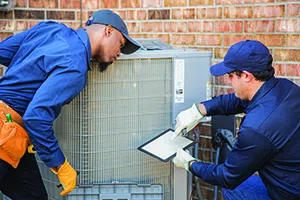Getting the most out of feedback when training technicians
One thing I’ve learned over time is, no matter how well you think you are doing, people around you may have a different perspective. Those people can include your family, your friends, your boss, your co-workers and even your customers. Yet, many times, when others want to share their perspective or feedback, we’re less than eager to accept it. After all, we all know ourselves and our jobs better than anyone else.
As general manager of Cook Heating & Air in Crawfordsville, IN, I manage a small team of HVAC technicians, customer service reps and office staff. That same fear of feedback is shared by most of them. Yes, I said, “fear of feedback.” For most people, including owners and managers, feedback in the workplace has earned a negative connotation. Many of us misunderstand the purpose and the benefit feedback can have for our employees’ success and our company’s success. We mistakenly assume feedback and criticism are synonymous. As owners and managers, we need to make sure our employees understand that feedback is a gift that, used appropriately, can help improve their job performance.
When training technicians on Cook Heating & Air’s customer service process, I make sure to also train them to understand, expect and appreciate feedback from trainers, peers and themselves.
There are four keys to effectively use feedback to maximize technician training.
1. Understand the rules for providing good feedback
This is simple, but important. Everyone attending or hosting your training, including you as an owner or manager, must understand, and abide by, critical feedback rules:
- Say what went well
- Say what could be improved
- Focus on being helpful and specific
- False courtesy is no more helpful than ‘all criticism, all the time’
Once everyone is playing by the same rules when providing feedback, the fear of feedback employees may have decreases.
Try this exercise: the next time your technicians role-play a customer interaction during your training (and, hopefully, you are doing this weekly), have the technician you are providing feedback to offer his/her own feedback first. Having an employee verbalize feedback himself/herself helps reduce the fear of feedback when that employee hears it from others.
2. Clearly communicate the training expectations up front and provide feedback based on each of those expectations
Think about coaching kids at baseball. The kids spend years doing the same drills. The more practice they have with a coach helping them, the more a particular instruction embeds itself in their brains for game time. Repetition helps drill it in until it’s second nature. Tracking consistent drills over time gives a coach a “form” for providing feedback on what went well and what could be tweaked.
Most athletes, especially professional ones, are completely comfortable receiving feedback from their coaches regularly – yet we aren’t open to it in our businesses. Those professional athletes have been trained since Little League on the same “form,” and they know coaches can, and want, to help them improve. Likewise, in business training, it’s essential to establish a “form” to track each technician on the same “drills” or training expectations with the same ranking scale.
I use a form that outlines each step of the customer call my service technicians are required to do. Each task has a number valuation assigned to it based on how well the technician executed the step or “drill”. This systematic approach to providing step-by-step feedback allows my technicians to understand the focus of the training and what they will be required to do in their jobs after training. This helps remove the fear of feedback for them, since they know what I am measuring their performance on.
3. Record your participants applying what they have learned during the course of the training
I like to incorporate videotaping of participants as another great form of feedback during technician role-play training. This feedback can be very influential since the technicians watch their own videos and provide feedback to themselves. This can be a huge eye-opener, causing immediate changes in performance, and, even more, can also be used in post-training support as a reference or guide for an individual’s professional growth.
4. Reinforce your participants’ learning with Ride-Alongs
In my opinion, this final form of feedback is the most valuable, and it’s the hardest to accomplish on an on-going basis. As the owner or manager, you need to dedicate time to reinforce your technicians’ learning by observing them applying the skills they’ve been taught to “real life” situations. I’ve found Ride-Alongs to be the most beneficial form of feedback because they are a great way for owners and managers to really see what happens during a call. There is no faking with a real customer scenario, and, as long as you have communicated the expectations upfront with the technicians
(refer back to bullet #2), your time spent on Ride-Alongs is priceless! As the old saying goes: inspect what you expect. Performing Ride-Alongs with your technicians is the single biggest opportunity you have when it comes to understanding and improving the customer service experience your technicians deliver.
The benefits of using feedback correctly during training stretch far beyond the actual training event and into every aspect of your technicians’ work. Make sure you are looking at this portion of your training to get the most out of the gift of feedback.
As an industry, we don’t invest enough in the training and development of our teams. Training is a large investment in time and resources. To maximize your ROI, follow these four keys of feedback, and watch your company leap forward!
Garrett Cook is currently the general manager for Cook Heating & Air in Crawfordsville, Indiana, and has served on the Board of Directors for the Heating & Air Conditioning Alliance of Indiana since 2008. Garrett has been training contractors in the PHCE industries as a Nexstar® Network trainer since 2011. For more information on training classes available through Nexstar, visit www.nexstarnetwork.com or call 1-888-240-STAR (7827).





